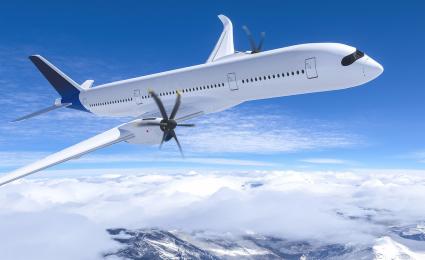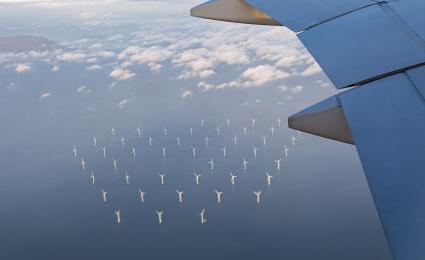Roland Berger’s path to sustainability and true-zero emissions for aviation and aerospace, including SAFs, electric propulsion and hydrogen power


Contrails - To mitigate or not to mitigate
Roland Berger brings the aviation industry together for discussion
Contrails, the wispy white streaks that airplanes leave behind in the sky, have been an increasing focus in discussions surrounding climate change. While they may seem harmless at first glance, latest scientific research suggests that they constitute one of the biggest components of aviation's contributions to climate change today. Contrails, particularly the long-lasting ones that spread out into cirrus clouds, have an overall net warning effect and trap heat in the Earth’s atmosphere, contributing to global warming. Despite ongoing research, the total scope of their impact remains uncertain, and the challenge of accurately measuring their long-term effects continues to puzzle scientists. However, what is becoming clear is that solutions to mitigate contrails are emerging, and businesses and governments must now start paying closer attention to this issue.

On 30 September, we had the opportunity to host an event centered around contrail mitigation at the Royal Aeronautical Society, in London. One of the key highlights was a trial run of RB’s latest tool, which compiles all the most up-to-date scientific knowledge on mitigation levers for contrails as well as other CO2 and non-CO2 emissions. The event saw participation from leading academics and companies, including Airbus, Rolls Royce, and NATS, all of whom are involved in shaping the future of sustainable aviation. During the event, attendees not only learned about the latest contrail research but also discussed emerging levers aimed at mitigating their formation. The discussions that followed among companies, scientists, and industry leaders made it clear that we are standing at a crucial crossroads: while we need more robust research to understand the full range of contrails’ effects, we must not delay mitigation efforts any longer.
One of the main takeaways from the event was that contrail mitigation should now be a key focus area for the aviation industry . While we have made strides in understanding how contrails contribute to climate change, the real challenge lies in applying this knowledge to engineering and operational practices that can reduce their formation. Simple operational changes, such as adjusting flight altitudes to avoid the specific atmospheric conditions that promote contrail formation, have shown promise. Furthermore, more advanced solutions, such as optimizing jet fuel formulations and redesigning aircraft engines to produce fewer contrail-inducing emissions, are being explored.
At the same time, we must continue our research efforts into the deeper, long-term impacts of contrails on climate systems through further trials and experimentation. The complex interplay between contrails, cirrus clouds, and atmospheric chemistry is not yet fully understood, and further investigation is essential. This should, however, not serve as an excuse to delay action. On the contrary, pursuing mitigation strategies in parallel with ongoing scientific inquiry is the most responsible course of action.
By addressing the problem on both fronts—enhancing our understanding of contrails while working on practical solutions to reduce their impact—we can strike a balance between urgency and caution. The aviation industry, which is already under pressure to reduce its carbon footprint , must view contrail mitigation as a core component of its sustainability strategy. Companies across the aviation value chain, along with the innovators behind tools like RB’s, are at the forefront of these efforts, driving progress in both research and engineering.
In conclusion, contrails represent a near-term environmental challenge that requires immediate action. While there is still much to learn about their total impact on the atmosphere, solutions to mitigate them are emerging and must be implemented without delay. Our recent event underscored the importance of prioritizing contrail mitigation, and we look forward to seeing the aviation industry take the lead in addressing this often-overlooked aspect of climate change.
We would like to thank Siyi Hao, Miguel Lopez and Yimian Tang for co-authoring this article.
Register now to receive regular insights into Aerospace & Defense topics.







_person_144.png?v=770441)